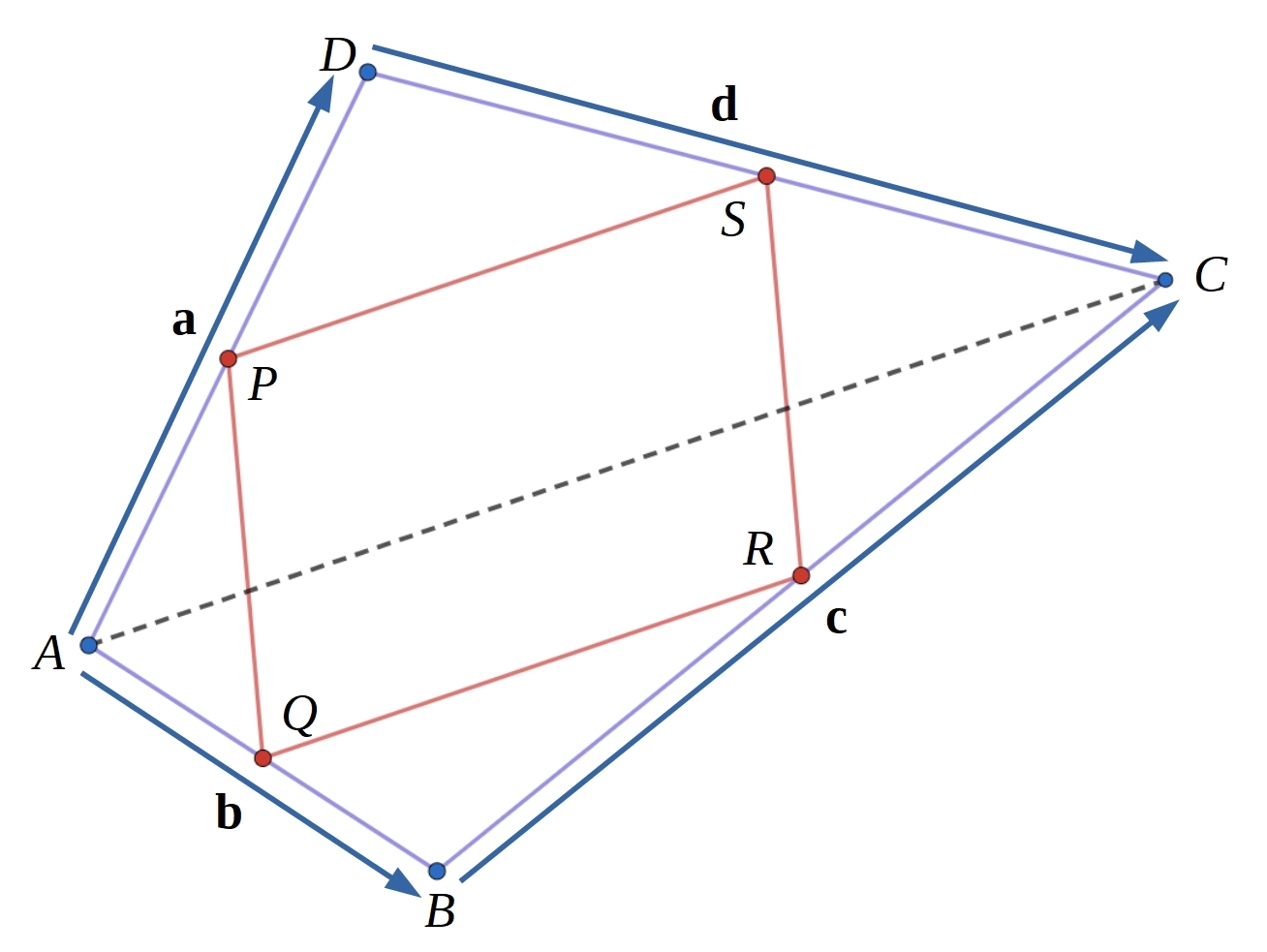Skip over navigation
Or search by topic
Number and algebra
Geometry and measure
Probability and statistics
Working mathematically
Advanced mathematics
For younger learners
Quad in Quad - Shape of PQRS Proof
Age 14 to 18
Challenge Level 





In Quad in Quad you were asked to draw different convex quadrilaterals and then find the midpoints of the four edges.
You may have noticed that the quadrilaterals that were formed when joining the midpoints looked like parallelograms. But can you prove that this will always be the case?
Below is a diagram and a proof that has been scrambled up.
Can you rearrange it into its original order?


